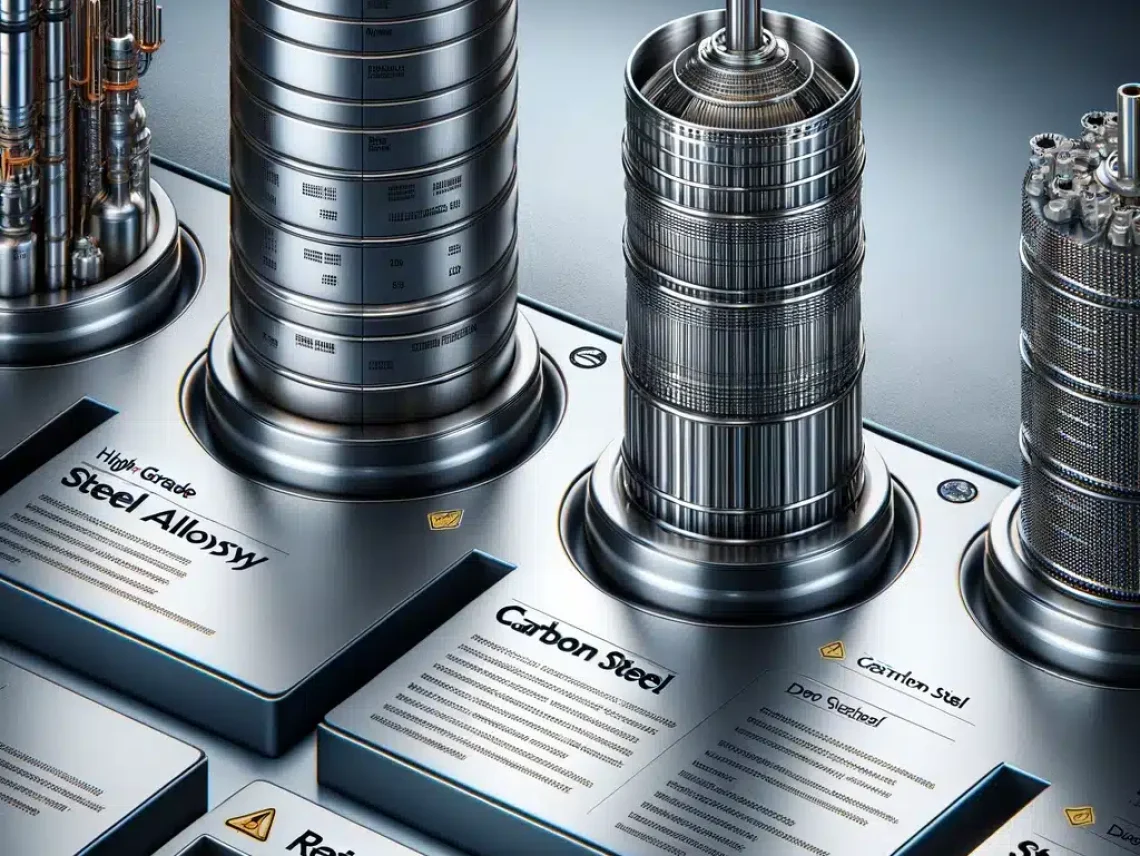
Table of Contents
ToggleA nuclear reactor pressure vessel is a key component in any nuclear power system. It houses the reactor core and controls the high levels of pressure, heat, and radiation produced during nuclear fission. These vessels must be constructed from advanced materials that meet stringent operational and safety standards. At Red River, we understand the importance of material integrity and fabrication standards in pressure vessel design. While we have not yet fabricated a nuclear reactor pressure vessel, our extensive work with reactor-style vessels allows us to support the industry’s evolving needs.
In a nuclear power plant, the nuclear reactor pressure vessel serves as the primary barrier for radioactive containment. It must maintain stability under extreme internal conditions while shielding personnel and the surrounding environment from radiation. The performance and safety of the entire system depend on the durability and reliability of the materials used in vessel construction.
The design of a nuclear reactor pressure vessel requires materials that can withstand:
These include low-alloy steels, corrosion-resistant metals, and specialized alloys.
Low-alloy steel is the most commonly used base material for pressure vessels due to its:
Red River’s experience working with these materials is foundational to our ability to meet future nuclear-grade fabrication standards.
The inclusion of elements like chromium and molybdenum enhances:
Nickel alloys are increasingly used in nuclear reactor pressure vessel parts because of:
These properties help minimize material degradation, reducing the need for frequent replacements or repairs.
Although not yet widely adopted in structural pressure vessel fabrication, composites offer potential benefits:
Research into these materials may influence future nuclear reactor pressure vessel innovations.
A nuclear reactor pressure vessel must maintain its shape and structural integrity even under fluctuating thermal and pressure loads. That requires:
Materials must:
Red River applies these considerations to all pressure vessel builds, even when used in non-nuclear environments.
Reactor systems often involve water or chemical coolants that can degrade materials. Long-lasting performance requires:
Producing a nuclear reactor pressure vessel requires advanced fabrication systems, including:
Red River uses similar processes to maintain consistency and precision in reactor-style vessel production.
Fabrication must include:
Fabricators must adhere to international codes including:
Every material used in a nuclear reactor pressure vessel must undergo:
At Red River, safety is built into every project. While we do not currently fabricate nuclear reactor pressure vessels, we build reactor-style pressure vessels under strict process controls. Our team operates with full awareness of nuclear-grade expectations, including documentation standards, traceability, and testing protocols. We are prepared to support the nuclear sector as opportunities emerge.
Red River successfully resolved material compatibility issues by integrating custom alloys designed for high thermal conductivity and stress resistance.
Using advanced FEA and CFD modeling, we delivered a vessel with precision tolerances for a chemical energy facility.
This project involved delivering a pressure vessel with ASME alignment and complete traceability for a client in a government-regulated sector.
Emerging trends include:
Red River remains dedicated to staying current with material and fabrication technologies that will define the future of the nuclear reactor pressure vessel market.
Need a reliable partner?
Red River specializes in the design and manufacturing of pressure vessels. We also fabricate related items such as prefabricated spools and skid packages.
Reach out to us today and experience the Red River difference. Where American Made and American Values come together, we care more.
It contains the reactor core, sustains high pressure and temperature, and prevents radiation leaks.
Materials must withstand intense heat, radiation, and corrosive environments while remaining structurally sound for decades.
Common materials include low-alloy steels, stainless steel cladding, and corrosion-resistant coatings or nickel alloys.
Precision machining, robotic welding, NDT, and full regulatory documentation are standard for nuclear-grade fabrication.
No, Red River does not currently fabricate nuclear reactor pressure vessels. However, we manufacture reactor-style vessels and are prepared to support nuclear-grade fabrication when needed.
Innovation in materials and smart monitoring will shape the future of nuclear reactor pressure vessel development.
Table of Contents
ToggleIn the realm of industrial solutions, Red River emerges as a pioneer, offering a diverse range of custom-engineered products and facilities. Among our specialties is the design and production of Custom/OEM Pressure Vessels, meticulously crafted to meet individual client requirements, ensuring performance under various pressure conditions. Our expertise extends to the domain of prefabrication, where Red River leads with distinction.
The company excels in creating prefabricated facilities, modules, and packages, reinforcing its stance as a forerunner in innovation and quality. This proficiency is further mirrored in their Modular Skids offering, where they provide an array of Modular Fabricated Skid Packages and Packaged equipment. Each piece is tailored to client specifications, underlining their commitment to delivering precision and excellence in every project they undertake.